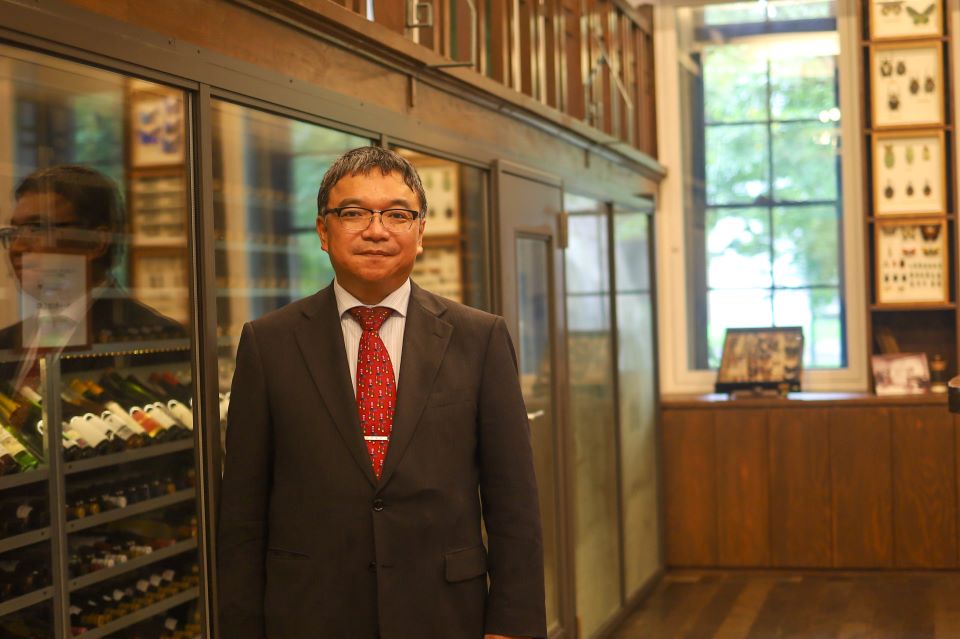
Professor Teruo Sone, Research Faculty of Agriculture and Director of the Hokkaido University Wine Education and Research Center at the facility’s wine cellar. (Photo: Miho Nagao)
A beautiful white-and-pale-green building stands amidst the elm trees of Hokkaido University. Built in 1901, it is one of the oldest buildings on the Sapporo campus and was once used as an entomology and sericulture classroom. It has now been reborn as the Hokkaido University Wine Research and Education Center. Over time, it will serve as a new base for research, promotion, and human resource development of Hokkaido wines.
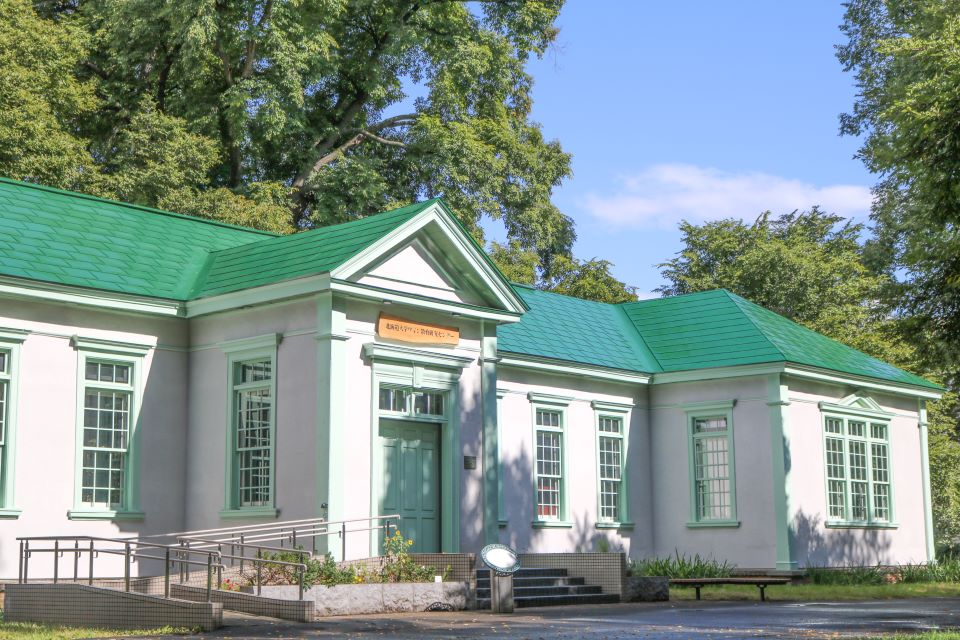
Sun shines on the renovated former entomology and sericulture classroom—now Wine Education and Research Center (Photo: Ayumi Hasegawa)
The building’s preservation and renovation were made possible with funds from the Ministry of Education, Culture, Sports, Science and Technology (MEXT) and donations to the Hokkaido University Frontier Fund’s Elm Forest Project.
At the opening ceremony, Hokkaido University President Kiyohiro Houkin expressed his gratitude to the donors and said, “We hope to make this facility a keystone of the Hokkaido Wine Valley.”
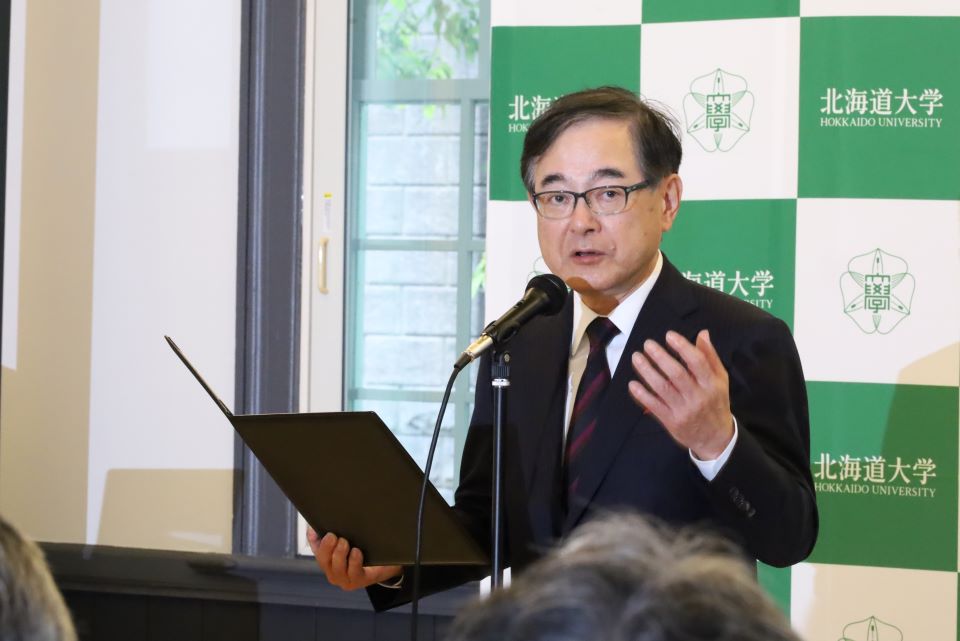
Hokkaido University President Kiyohiro Houkin, wearing a wine-colored tie, addresses the guests at the opening ceremony. (Photo: Manami Kawamoto)
After the reception, Hokkaido Governor Naomichi Suzuki presented a congratulatory speech along with five other guests. This was followed by a presentation from Teruo Sone, professor at the Research Faculty of Agriculture and director of the Hokkaido University Wine Education and Research Center, explaining the details of the Research Center.
The conservation and renovation of the building was planned by Professor Takeo Ozawa of the Faculty of Engineering, based on the concept of “preserving the value of cultural assets while ensuring that they will endure for the next 100 years.” Opting for an exposed-beam design for the ceiling of the gallery space emphasizing the original beams, and using wood from Hokkaido University’s research forests for its ceiling plywood and flooring, the space creates a perfect blend of the past and present of Hokkaido University. Sone is preparing to open the Center to the public in the spring of 2024 so that visitors can enjoy wine tastings here.
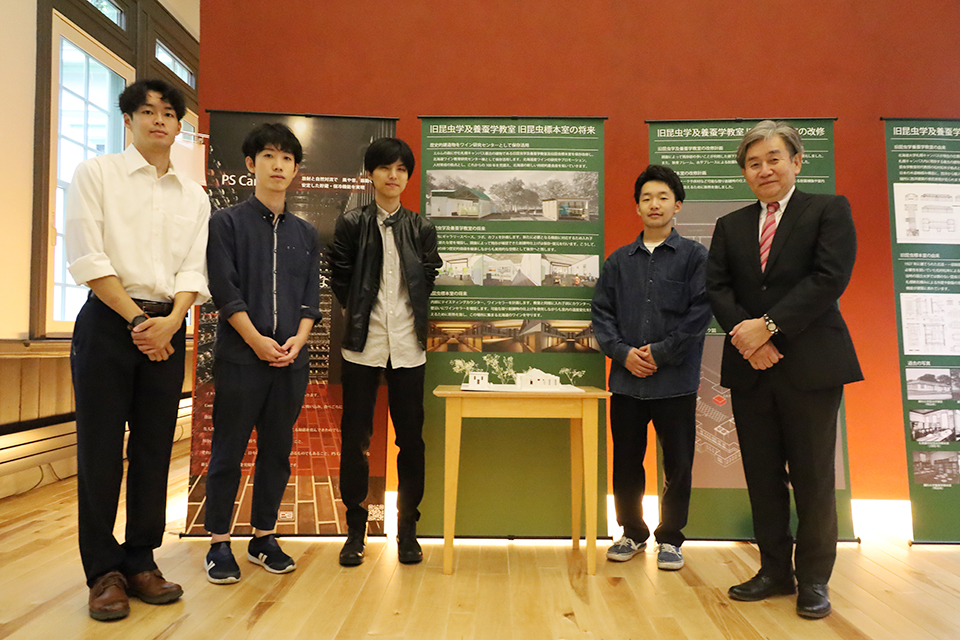
Professor Takeo Ozawa of the School of Engineering (right) with students, surrounding a model of the Wine Research and Education Center. (Photo: Manami Kawamoto)
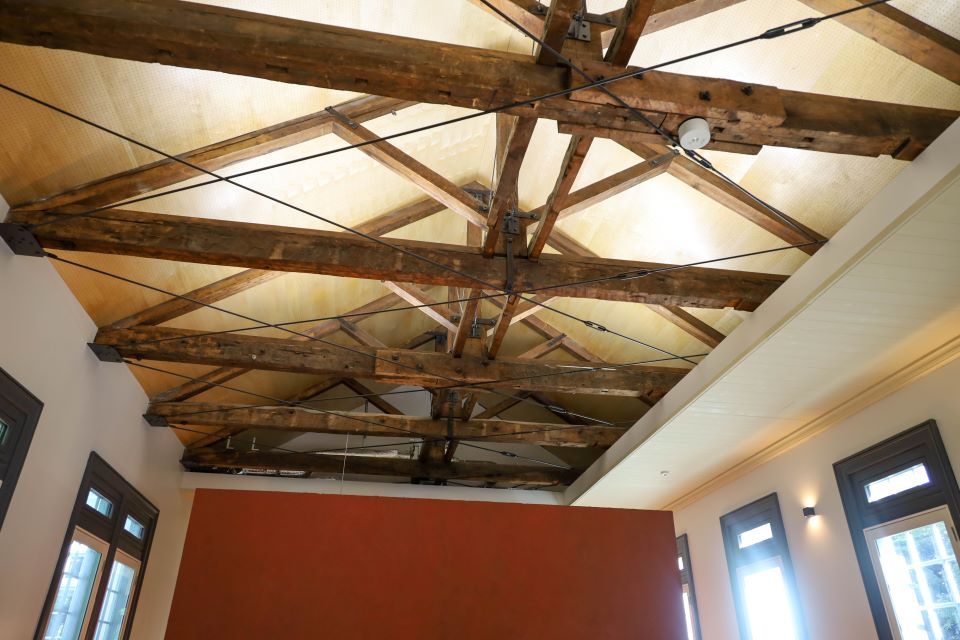
The exposed beam ceiling of the gallery space re-used the beams from the original structure, giving the space a historic touch. (Photo: Miho Nagao)
Meanwhile, the ceiling of the Promotion Hall and the Innovation Lab has been restored with an impressive openwork carved chandelier base, adding to the retro atmosphere of the rooms. The promotion space will be used as a venue for wine-related seminars and lectures, as well as for concerts with wine in hand.
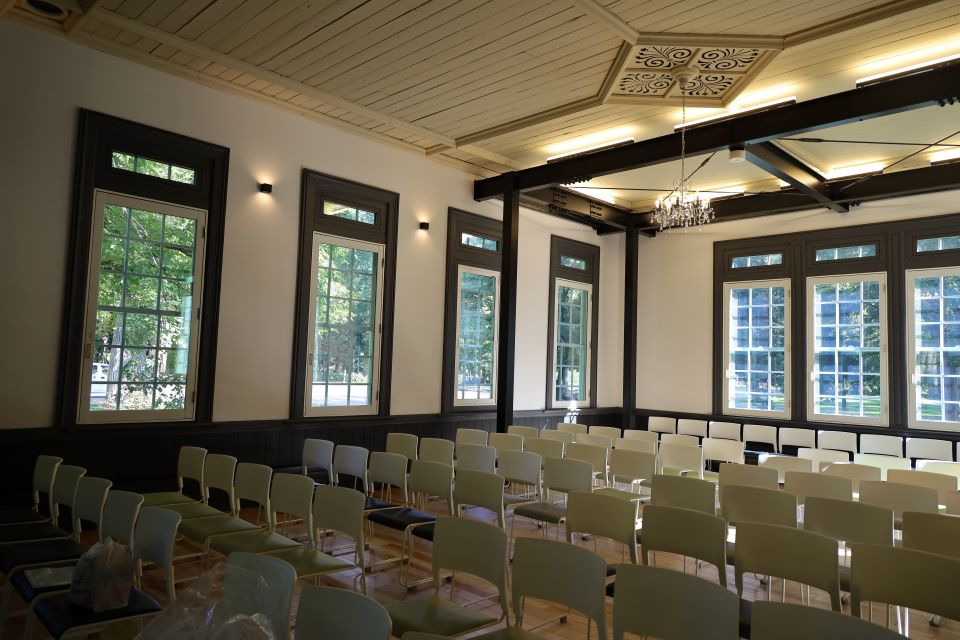
Promotional space with an impressive chandelier base. (Photo: Miho Nagao)
The Innovation Lab researches soil and other factors related to wine production. It is equipped with a machine that can quickly calculate multiple values—such as sugar content and acidity—from trace amounts of juice and wine, to support producers who have difficulty conducting analysis on their own. In addition, the lab is conducting joint research to quantify the aroma of wine. “We would like to promote research that will increase the value of Hokkaido wines,” said Sone, expressing his enthusiasm.
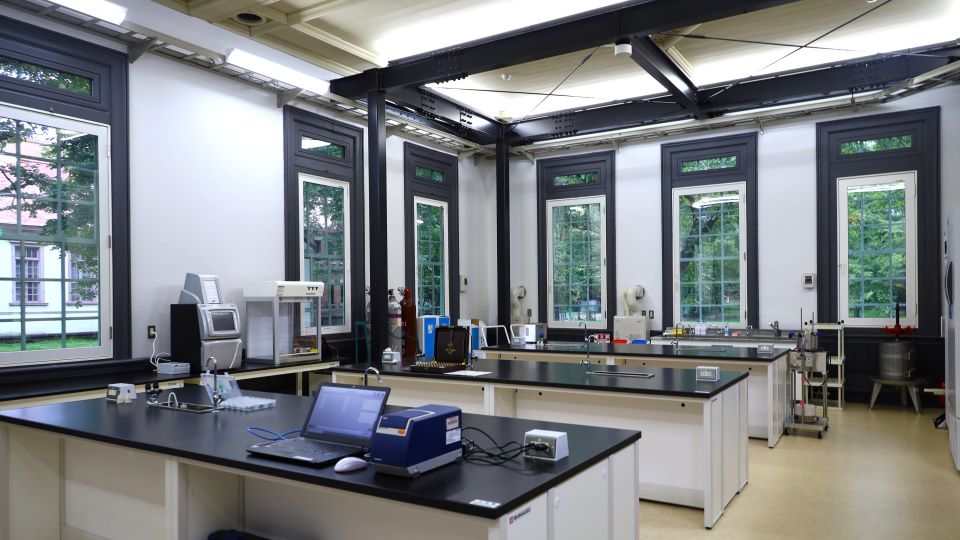
Inside the Innovation Lab. (Photo: Manami Kawamoto)
Behind the Center is an intriguing stone building named Insecta Matsumurana. This building was once internationally known for housing one of the best collections of insect specimens in Japan by entomologist Matsumura Shonen; it is now a wine cellar. The cellar is air-conditioned and possesses conditions suitable for wine preservation, and can store approximately 1,800 bottles of wine. At present, it is lined with wines from approximately 50 wineries in Hokkaido—from Hakodate in the south to Kitami in the north. In the future, Sone would like to keep the products of wineries in Hokkaido and establish a wine bank to increase the value of their wines.
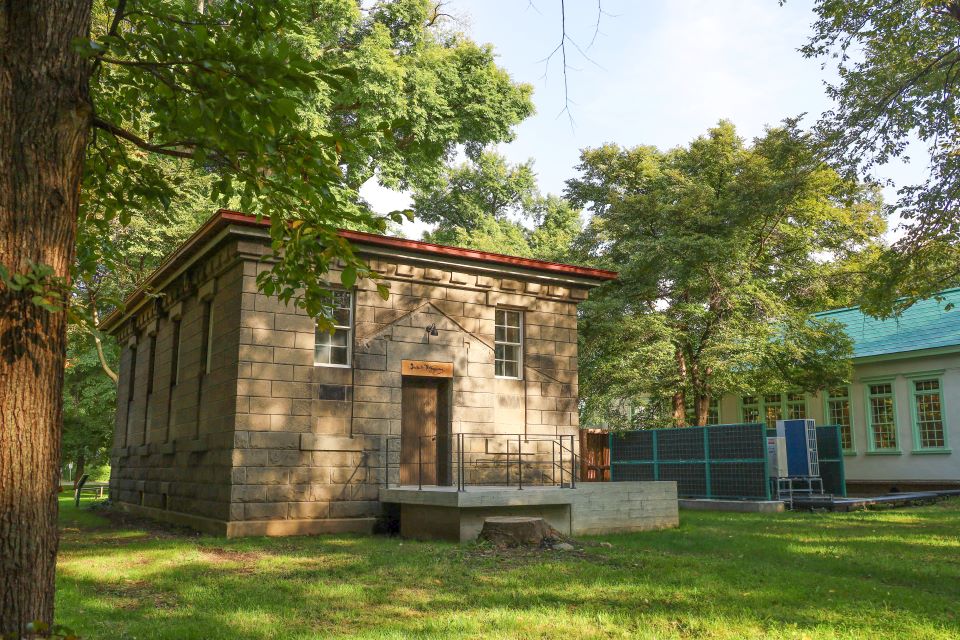
Named after a scientific journal, the building “Insecta Matsumurana” has been converted into a wine cellar for the research facility.
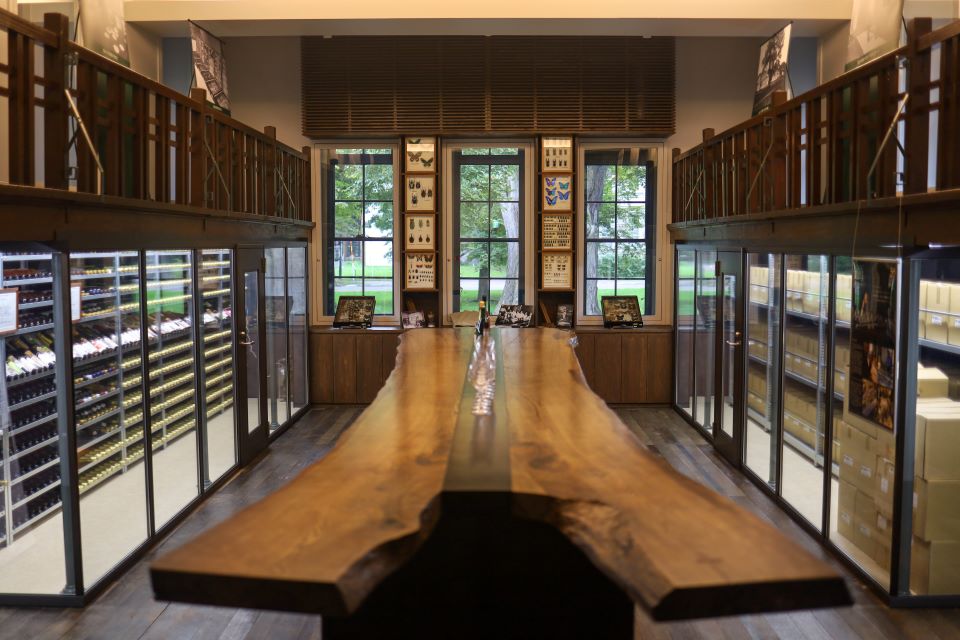
Inside the wine cellar. (Photo: Miho Nagao)
Inside the cellar, a gorgeous elm tree table lies in the center. There are wine refrigerators on both sides and a beautiful view of the Elm Grove from the windows. “The table has a strong presence,” said Takanori Nishimura, a professor at the Research Faculty of Agriculture, who was involved in the conservation and renovation project. “Seen from the entrance, it looks as if an elm tree is standing there. And from beyond the windows, you can see a large elm tree. We valued that kind of narrative.”
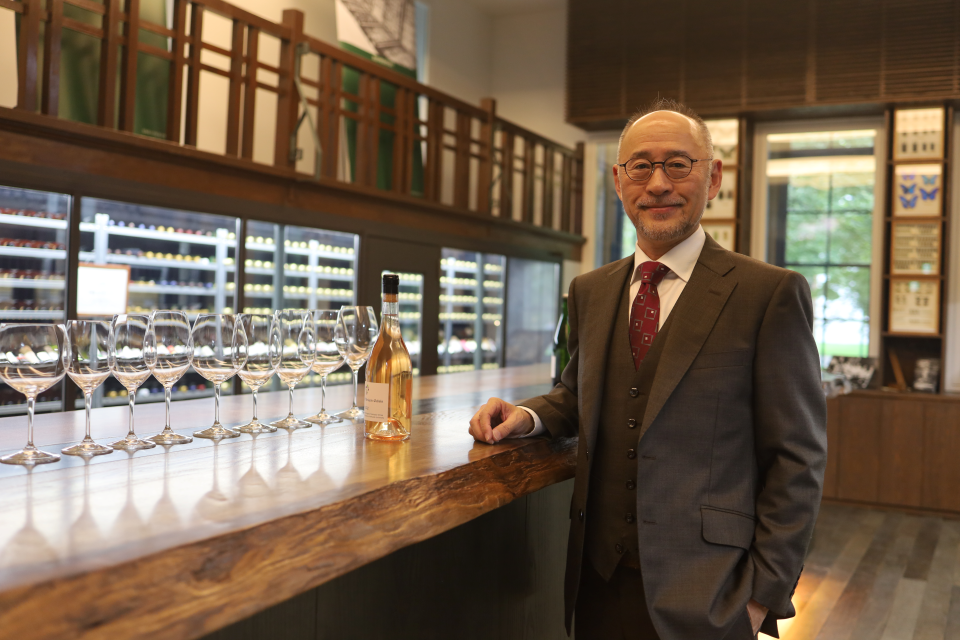
Takanori Nishimura, a professor at the Research Faculty of Agriculture, was involved in the renovation. (Photo: Miho Nagao)
On shelves mounted on the wall opposite the entrance are insect specimens named by Matsumura Shonen. The display by Professor Masahiro Ohara of the Hokkaido University Museum, who inherited Matsumura Shonen’s entomological collections, recreates the atmosphere of the early days.
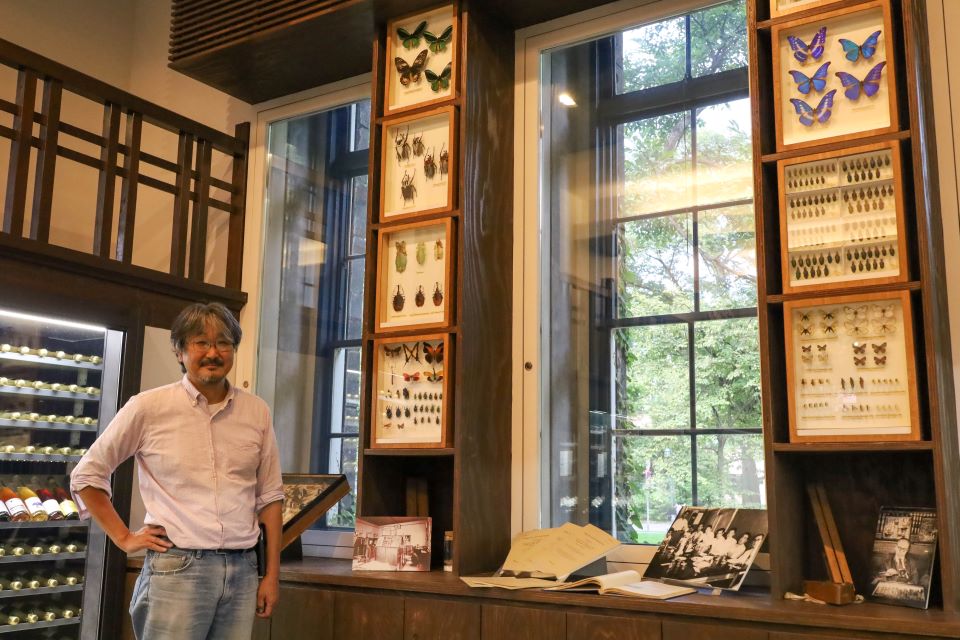
Professor Masahiro Ohara of the Hokkaido University Museum with insect specimens on display. Some special specimens were put out only for the opening ceremony. (Photo: Miho Nagao)
After the ceremony, Sone spoke about the opening of the Center, “I am both happy and humbled. Wine production involves a wide range of research issues, including soil, climate, microorganisms, marketing, and even waste products from the winemaking process. The Center’s opening marks a milestone for the University, which will leverage its strengths as a comprehensive institution to advance wine research from a variety of perspectives.” According to Sone, the first wine was produced in Hokkaido in 1876, the same year Hokkaido University was founded. In 2026, when Hokkaido University celebrates its 150th anniversary, Sone would like to hold an event to mark the 150th anniversaries of both occasions together.
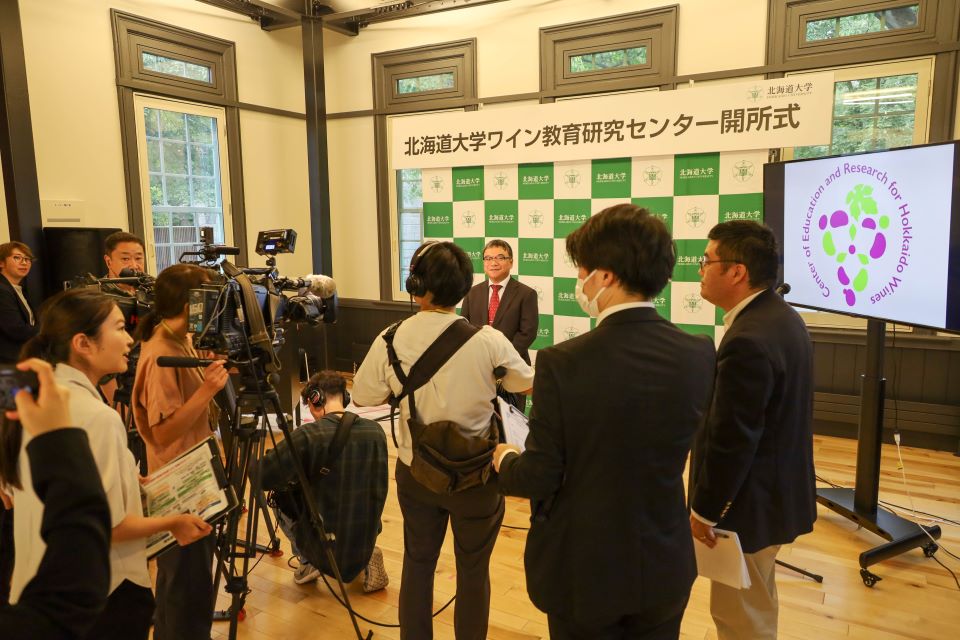
Professor Sone of the Research Faculty of Agriculture being interviewed by the press.
The building where Hokkaido University Wine Education and Research Center stands has inherited a rich history and has been revitalized through the efforts of many people. As a place for learning, research, and gathering, it will continue to promote Hokkaido wines from the Elm Grove.
Translated and rearranged by Gauri Kashik (Science Writing Intern).
The original Japanese article is here.
Related articles:
Comments (0)